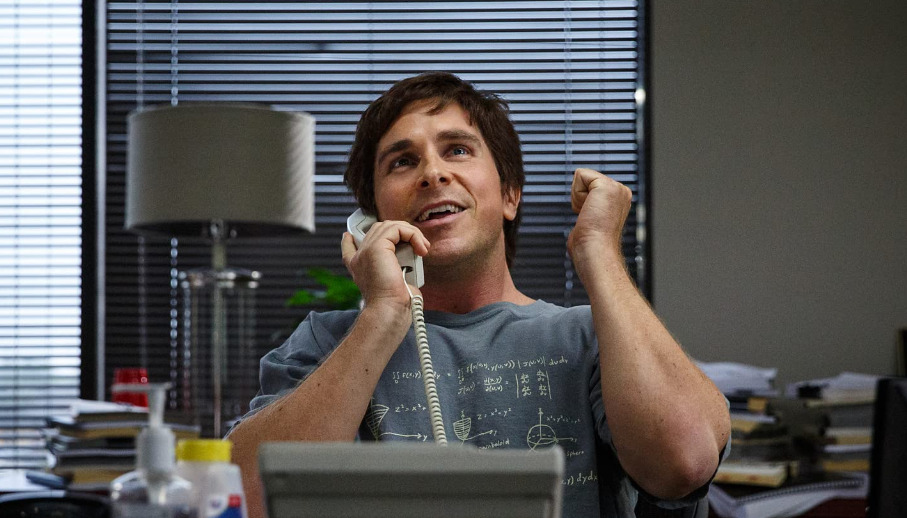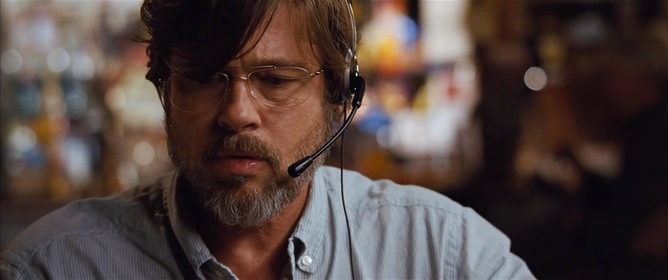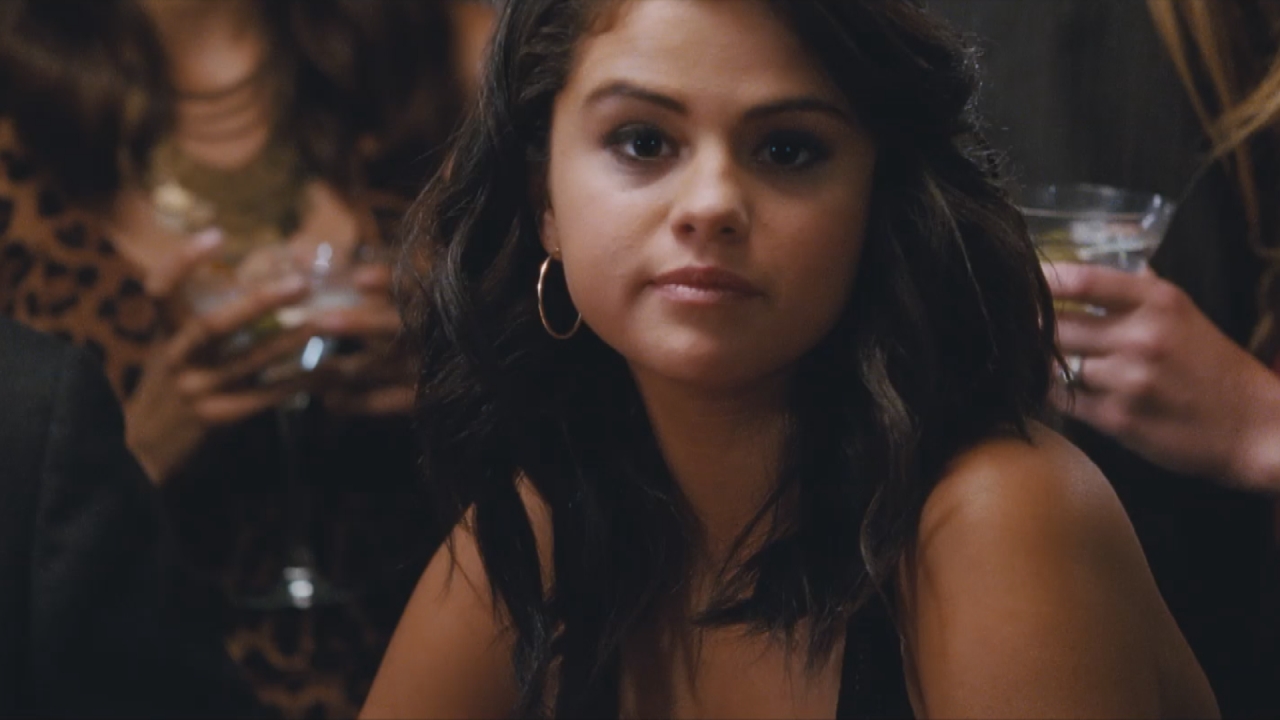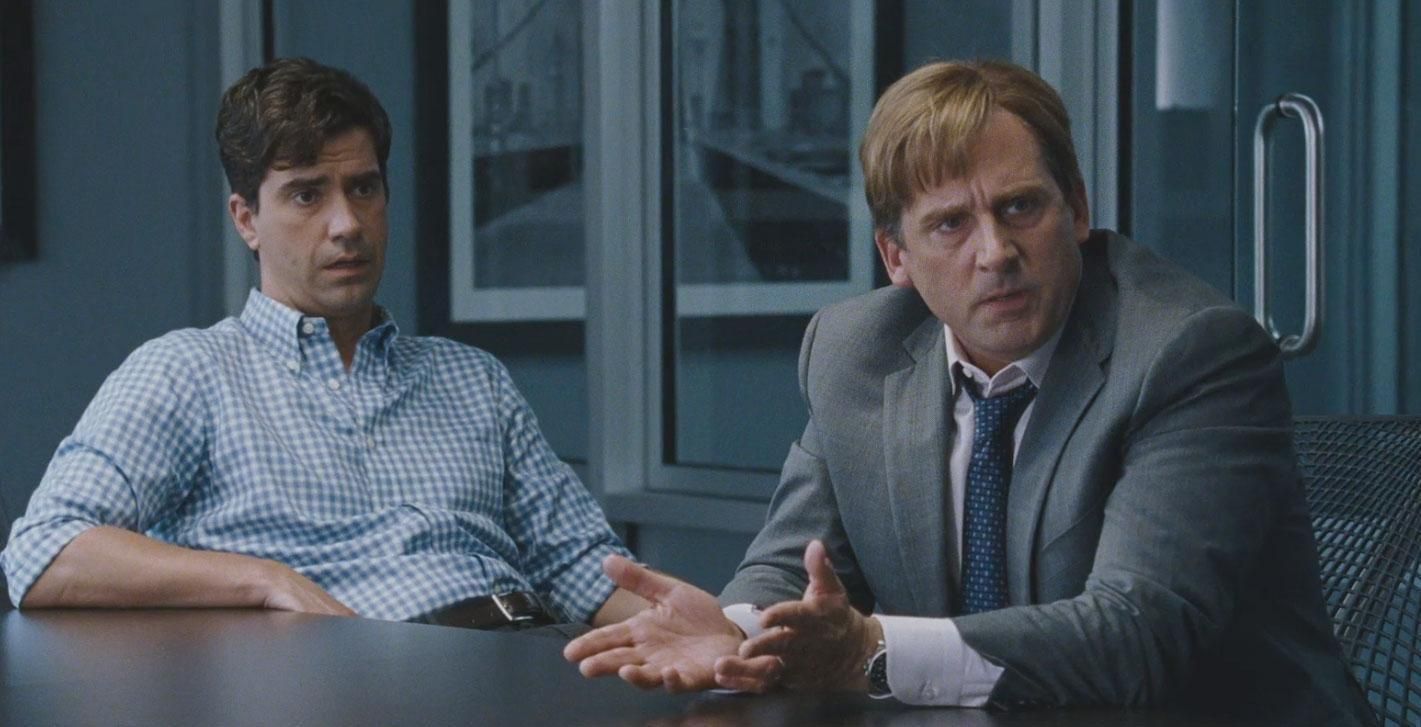Directed by Adam McKay, ‘The Big Short’ is a crime comedy-drama film that revolves around a few financial-industry experts, particularly Michael Burry, Jared Vennett, Mark Baum, and Ben Rickert, who predict the forthcoming economic descent in the country’s housing market bubble and hit the jackpot by betting against the banks. It takes the ubiquitous financial concepts like Subprime Lending and Collateral Debt Obligation (CDO) and makes the audience understand them through interesting directorial techniques, including breaking the fourth wall and weaving the individual stories in a collage-like narrative.
Advanced as a biographical film, the 2015 film is driven by a taut storyline and compelling performances by a stellar cast comprising prolific actors such as Christian Bale, Steve Carell, Ryan Gosling, and Brad Pitt in central roles, alongside several talented cast members and cameos. If the realistic elements in the narrative make you wonder just how rooted in reality ‘The Big Short’ is, you’ve come to the right place. Here’s what we know!
The Big Short is Based on a 2010 Book
‘The Big Short’ is based on a true story. The movie is an adaptation of Michael Lewis’ bestselling non-fiction book ‘The Big Short: Inside the Doomsday Machine,’ which centers upon the 2007-08 mortgage housing crisis that left millions of American people penniless. The 2010 book was developed for the screen by director Adam McKay and co-writer Charles Randolph, who also bagged an award for Best Adapted Screenplay at the Academy Awards. The subprime mortgage crisis essentially occurred as the traders started betting on the housing debt market and profiting from the crisis.

Several big banks like J. P. Morgan, Goldman Sachs, Bear Stearns, AIG, and Lehman Brothers were implicated in the fraud but were reprieved in the aftermath. Bear Stearns collapsed after the recession and was sold to JP Morgan Chase. Many of us lost our homes, jobs, pensions, and retirement funds in the global crisis competing with the Great Depression of the 30s. The movie portrays this problem through the eyes of four oddballs in the financial world who predicted this fall beforehand. It’s not that they are shown as heroes or villains but those who actually knew and pointed out what was happening in the world – how people were debt-ridden but this was profiting the financial institutions.
Bale portrays Michael Burry, a gifted neurologist, investor and hedge fund manager with Asperger’s syndrome. He saw through the numbers and the propaganda of Wall Street, and thus, was aware of the crime much before it came to light. Ever since, Burry has been in the news, and people took special notice when in February, Burry deleted his Twitter account after tweeting an ominous message: “Sell”. In August 2023, Burry bet on another Wall Street crash that’s going upwards of $1.6 billion. Steve Carrell plays Mark Baum, a hedge fund investor by the name of Steve Eisman, who asked to change his name for the book. He profited upwards of a million dollars after shorting the CDOs. Eisman is a senior portfolio manager at the asset management firm, Neuberger Berman, where he’s been working since 2014.

Ryan Gosling is Jared Vennett, a trader based on Greg Lippmann, who was the global head of CDO and ABS trading at Deutsche Bank at the time of the financial collapse, and earned to the tune of $1.5 billion. In 2010, Lippmann co-founded the asset management firm, LibreMax Partners. McKay’s Vennett breaks the fourth wall most often and stops and asks the audience whether they even understood the laborious money talk in the film.
Brad Pitt plays Ben Rickert, who is based on the retired trader Ben Hockett at Deutsche Bank, who helped the Cornwall Capital employees Charlie Ledley and Jamie Mai (whose names were changed in the film to Charlie Geller and Jamie Shipley) . For his role, Pitt gained 20 pounds and grew his salt-and-pepper beard, going for a more laid-back look. Hockett had left the Wall Street market to partake in derivative trading from his Beverly Hills home.
The four people bet against this downfall, which wreaked havoc in the market and made a ton of money doing so. But this is the difference between ‘The Wolf of Wall Street’ and ‘The Big Short’. In the latter, the protagonists do not seem to rejoice even as they gain hundreds of millions of dollars. Furthermore, what they do is not illegal, even if it seems so, and somehow some viewers may end up rooting for them through the film!
In an interview with NPR, McKay said that while reading Lewis’ book, he found a footnote congratulating the reader on understanding a difficult concept, after which he got the idea of breaking the fourth wall in his film. So, we see Margot Robbie in the bath talking about subprime, Selena Gomez playing in the casino, and culinary icon Anthony Bourdain in his kitchen, explaining financial concepts. That’s breaking the fourth wall as well as a parody of the music videos or reality TV in current times. With this, essentially, McKay aimed to ask: what if they all relayed crucial information that would affect the lives of millions of people?

According to McKay, there’s too much information in Lewis’ book, so a collage-type structure, with scenes patched up, makes ‘The Big Short’ an unparalleled Wall Street drama. The last thing he wanted for the audience is to find it dull and so matter-of-fact that people forget this phenomenon happened in real life with pretty drastic consequences. Since McKay wanted to highlight how the adverse effects of economic collapse on regular people, he opted for a somber ending as opposed to the one in the book, which is all about knowledge of the crash, the bets, and threats to the financial system from within.
The movie navigates the bankers’ progress from the country club to the strip club in one of the scenes wherein it is on the verge of transforming into ‘The Wolf of Wall Street,’ which hammers away at this kind of life. However, this is where ‘The Big Short’ stops short. The latter goes into great depth about the crisis and all those involved. Apart from that, the movie set does not break the realism and resonates with the early 2000s – you can see it in the clothes, cars, Blackberry phones, and computers. Reportedly, Christian Bale wore Burry’s actual T-shirt for the film’s shooting!
McKay wants to show the world what exactly happened, beyond the complex financial issues at hand, so that common people who were most affected can also partake in this conversation. Taking the aforementioned factors into consideration, we infer that ‘The Big Short’ is a brilliant film that talks about a difficult subject without tiring the audience. It presents a succulent blend of stories of real people and events with several elements of dark comedy.
Read More: Movies Like The Big Short


You must be logged in to post a comment.